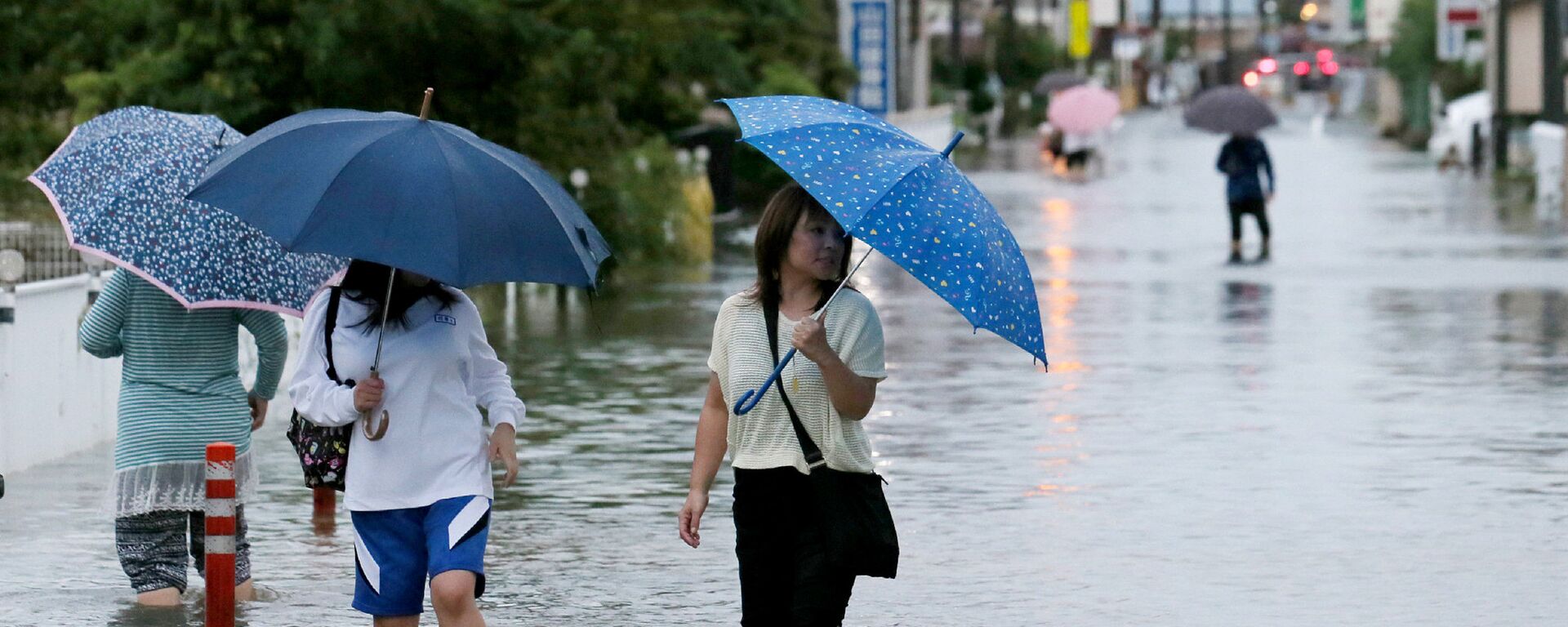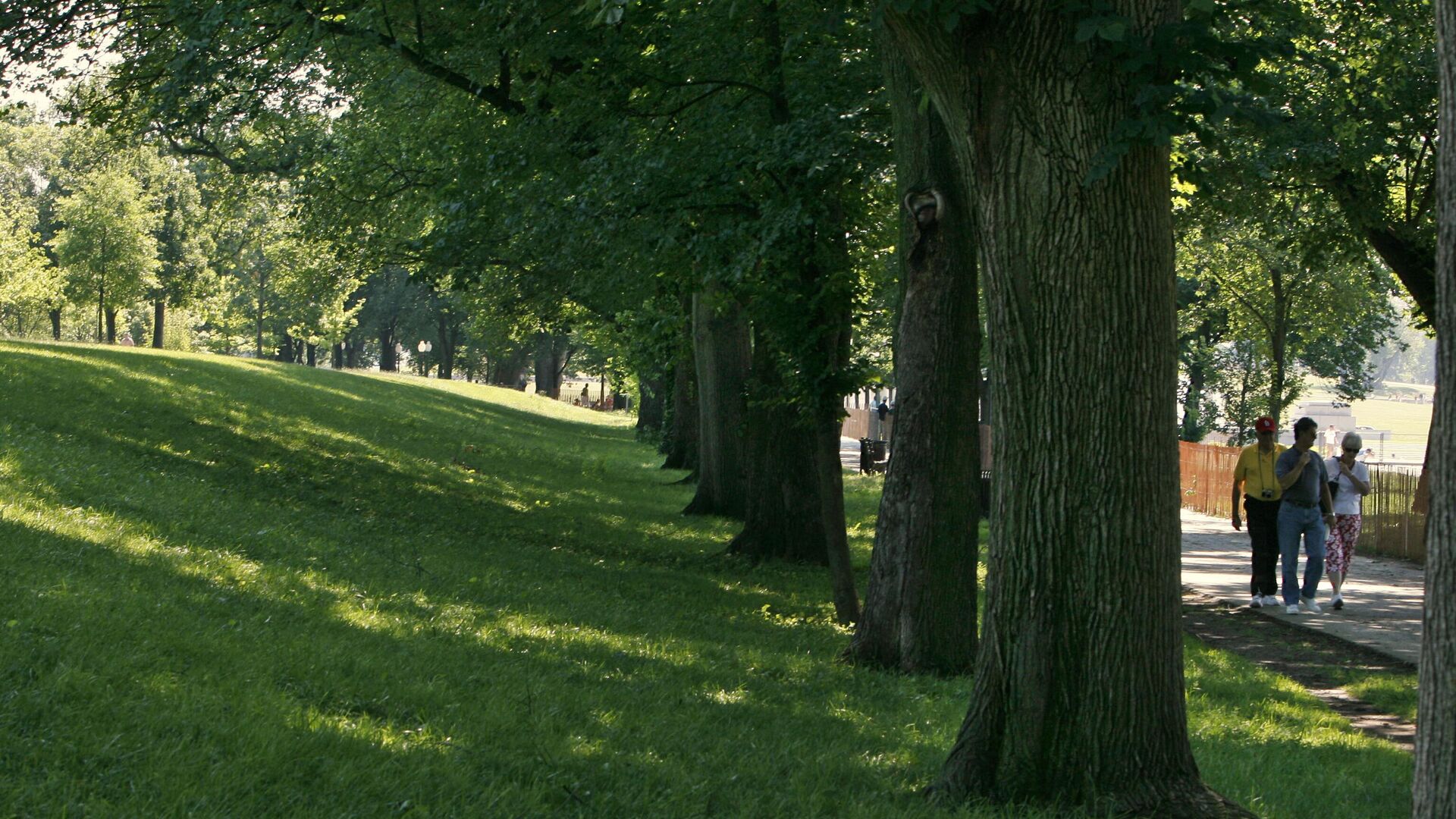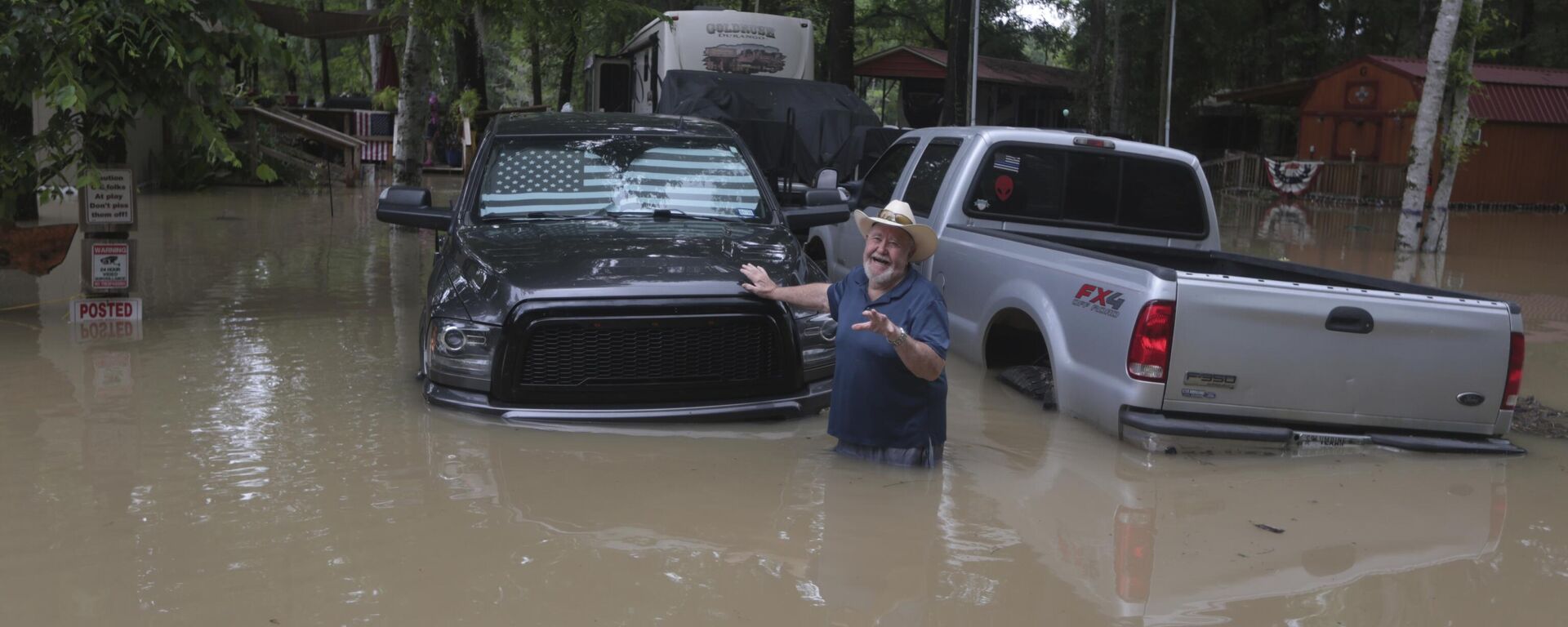https://sputnikglobe.com/20240922/sponge-cities-could-help-prevent-flooding-infrastructure-damage--1120240981.html
'Sponge Cities' Could Help Prevent Flooding, Infrastructure Damage
'Sponge Cities' Could Help Prevent Flooding, Infrastructure Damage
Sputnik International
Severe cases of flooding worldwide are expected to not only continue, but will worsen according to experts who say climate change is driving high-intensity rainfall that is destroying and overwhelming infrastructure.
2024-09-22T05:01+0000
2024-09-22T05:01+0000
2024-09-22T05:08+0000
beyond politics
china
pakistan
floods
floodwater
rain
torrential rain
infrastructure
natural disaster
https://cdn1.img.sputnikglobe.com/img/07e8/09/16/1120243312_0:160:3073:1888_1920x0_80_0_0_364b4483cdea4aa19c0a34de6002d4d5.jpg
Yasmeen Lari, Pakistan’s first female architect, is looking at new ways to prevent flooding in urban areas, Financial Times reported. Severe cases of flooding worldwide are expected to not only continue, but will worsen according to experts who say climate change is driving high-intensity rainfall that is destroying and overwhelming infrastructure.“Every country, every city is now facing more or less this kind of issue — whether it’s New York or London or Karachi,” says Lari, 83. “So we all need to prepare for it.”In an effort to address the damage and risk to life that flooding can cause, architects are now suggesting they make their cities and homes more sponge-like. As a pilot project, Lari installed terracotta pavements as opposed to concrete pavements at Denso Hall Rahguzar that are made to absorb water to reduce the risk of flooding.However, Lari alone cannot take credit for the concept of a “sponge city”, which was first popularized by the Chinese landscape architect Kongjian Yu. It falls into the categories of; green infrastructure, low-impact development, or sensitive urban design. The intention is to design a city that is able to redirect rainfall back into the earth instead of through man-made pipes, channels or streets, NPR reported.China has been spearheading this kind of infrastructure thanks to economic reforms in the late 1970s that have driven urban populations from 20% to around 65%. China first adopted Yu’s concept in 2013 and tested it in a pilot program across 30 cities. In Sanya, Yu and his team tested their theory by creating a park with; sponge-like wetlands, terraced embankments, ponds, rice paddies and greenways that can accommodate 830,000 cubic meters of stormwater, the Financial Times report detailed.Lari echoed the need for gardens and other vegetation, as plants play a vital role in helping absorb water, encourage permeability, improve air quality, reduce extreme heat and improve biodiversity.“Right in the middle of streets, we should plant forests,” says Lari.The issues standing in the way of these sponge-city makeovers are both financial and practical. Therefore, it may be easier to integrate the green concept in new neighborhoods as opposed to overhauling some areas. However, Lari optimistically suggests that green urban planning can be done on a smaller, individual scale.“I don’t know what will happen in a few years time, because the intensity [of rainfall] keeps on increasing, but at least for the foreseeable future, we can prevent urban flooding,” she added. “This can be done locally. And it should be done.”
https://sputnikglobe.com/20240922/deadly-landslides--floods-devastate-ishikawa-prefecture-1120240460.html
https://sputnikglobe.com/20240505/hundreds-of-people-rescued-amid-floods-in-texas-1118261343.html
china
pakistan
Sputnik International
feedback@sputniknews.com
+74956456601
MIA „Rossiya Segodnya“
2024
News
en_EN
Sputnik International
feedback@sputniknews.com
+74956456601
MIA „Rossiya Segodnya“
Sputnik International
feedback@sputniknews.com
+74956456601
MIA „Rossiya Segodnya“
sponge cities, green urban planning, rain, infrastructure, green infrastructure, low-impact development, sensitive urban design, urban planning, natural disaster, disaster solution, flood solution, urban infrastructure, infrastructure development
sponge cities, green urban planning, rain, infrastructure, green infrastructure, low-impact development, sensitive urban design, urban planning, natural disaster, disaster solution, flood solution, urban infrastructure, infrastructure development
'Sponge Cities' Could Help Prevent Flooding, Infrastructure Damage
05:01 GMT 22.09.2024 (Updated: 05:08 GMT 22.09.2024) In 2023, approximately 32 million people across the globe were impacted by flooding, including being injured or losing their homes, Statista noted. However, that pales in comparison to the year of 1998 when China suffered their worst floods in over 44 years, and the US experienced the October 1998 Texas Flooding.
Yasmeen Lari, Pakistan’s first female architect, is looking at new ways to prevent flooding in urban areas,
Financial Times reported. Severe cases of flooding worldwide are expected to not only continue, but will worsen according to experts who say climate change is driving high-intensity rainfall that is destroying and overwhelming infrastructure.
“Every country, every city is now facing more or less this kind of issue — whether it’s New York or London or Karachi,” says Lari, 83. “So we all need to prepare for it.”
In an effort to address the damage and risk to life that flooding can cause, architects are now suggesting they make their cities and homes more sponge-like. As a pilot project, Lari installed terracotta pavements as opposed to concrete pavements at Denso Hall Rahguzar that are made to absorb water to reduce the risk of flooding.
“Everybody has got to stop using concrete,” Lari said. "That is the worst material. It actually causes more flooding. If you look at urban flooding, the reason why it’s becoming worse is because we’ve got concrete paving everywhere. Water is not able to seep into the soil.”

22 September 2024, 04:09 GMT
However, Lari alone cannot take credit for the concept of a “sponge city”, which was first popularized by the Chinese landscape architect Kongjian Yu. It falls into the categories of; green infrastructure, low-impact development, or sensitive urban design. The intention is to design a city that is able to redirect rainfall back into the earth instead of through man-made pipes, channels or streets,
NPR reported.
China has been spearheading this kind of infrastructure thanks to economic reforms in the late 1970s that have driven urban populations from 20% to around 65%. China first adopted Yu’s concept in 2013 and tested it in a pilot program across 30 cities.
In Sanya, Yu and his team tested their theory by creating a park with; sponge-like wetlands, terraced embankments, ponds, rice paddies and greenways that can accommodate 830,000 cubic meters of stormwater, the Financial Times report detailed.
“The sponge city concept adapts these ancient principles into urban planning,” says Yu. “By incorporating permeable surfaces, green spaces, and constructed wetlands.”
Lari echoed the need for gardens and other vegetation, as plants play a vital role in helping absorb water, encourage permeability, improve air quality, reduce extreme heat and improve biodiversity.
“Right in the middle of streets, we should plant forests,” says Lari.
The issues standing in the way of these sponge-city makeovers are both financial and practical.
“[It] requires changing existing regulations, building codes, and practices, which can face resistance from stakeholders accustomed to conventional methods,” says Yu.
Therefore, it may be easier to integrate the green concept in new neighborhoods as opposed to overhauling some areas. However, Lari optimistically suggests that green urban planning can be done on a smaller, individual scale.
“No government will have enough money to be able to really take up the challenges that exist today because of climate change,” she said. “But everything can be taken care of.”
“I don’t know what will happen in a few years time, because the intensity [of rainfall] keeps on increasing, but at least for the foreseeable future, we can prevent urban flooding,” she added. “This can be done locally. And it should be done.”




